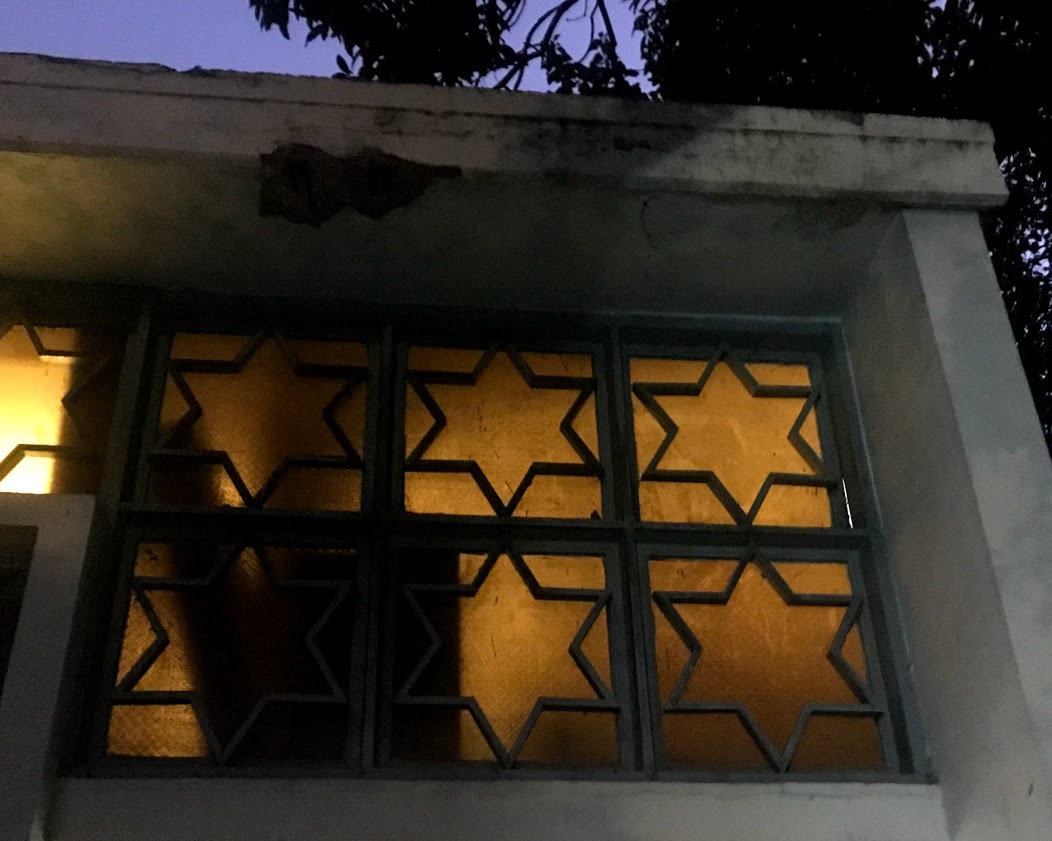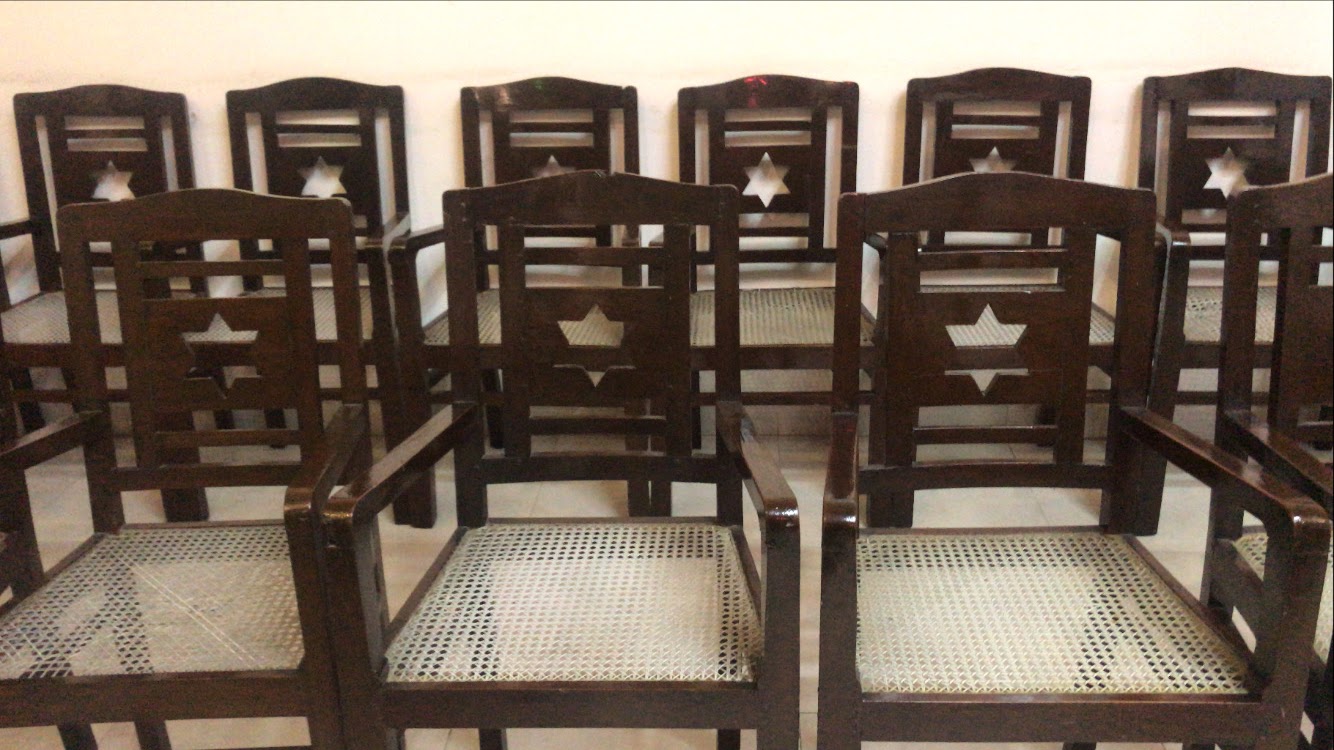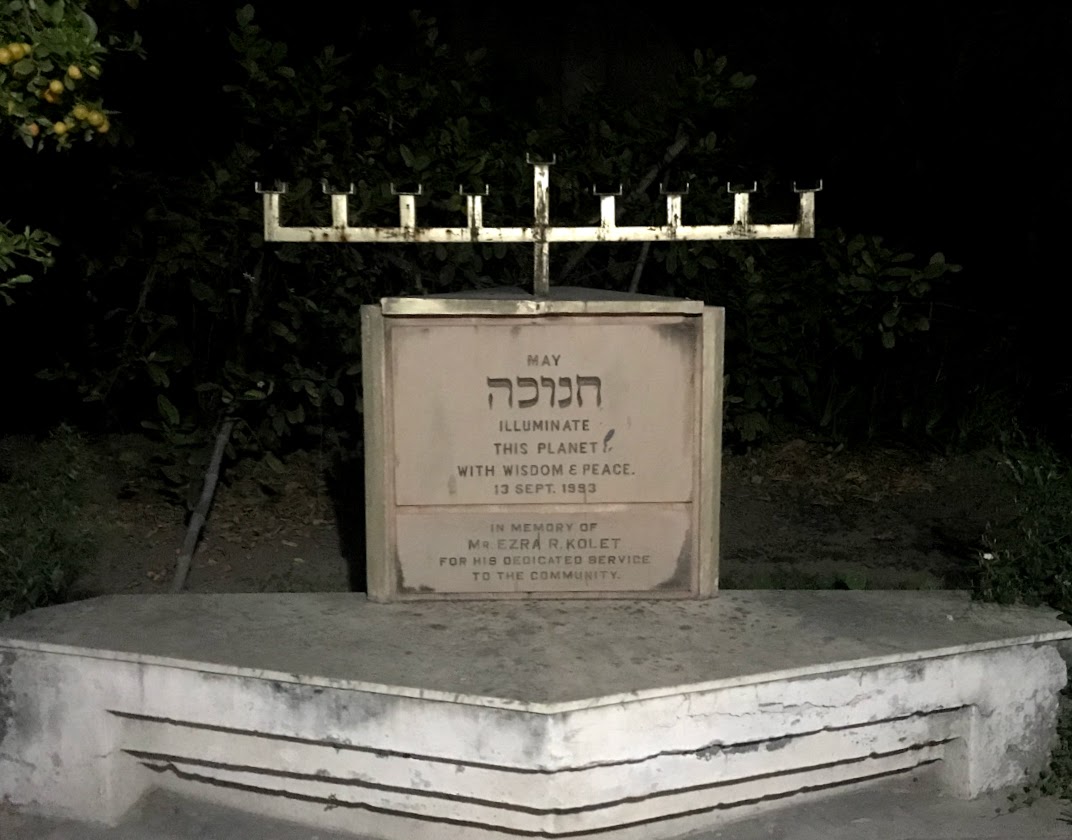With the Taj Hotel on one side and Khan Market on the other, and surrounded by a thick cover of trees, one can almost be forgiven if they overlook the small blue gate that leads you inside 2, Humayun Road. This is the address of the Judah Hyam Synagogue, Delhi’s only house of worship for the followers of Judaism. The Jewish community in Delhi has come down to only about 25 to 40 people, with less than 10 families remaining in the city and this is where they gather to pray, celebrate, and to mourn. Delhi’s only Jewish cemetery is also located next door.
(You might also want to read: CITY OF THE DEAD: ICONIC GRAVES OF DELHI)

What sets the Judah Hyam Synagogue apart from most other similar structures all over the country is the fact that it is open to followers of all faiths. The synagogue also houses an interfaith study center in their library, where one would find books from all major religions and faiths of the world. Upon entering the blue gate of the Synagogue premises, you’d find yourself staring at a big hall in some distance with multiple six-pointed Stars of David adorning the upper portions of the structure. The wall outside the hall (with another star on top) reads:
SYNAGOGUE
JUDAH HYAM HALL
Below it is the depiction of a Menorah, followed by a line from the Torah, which reads “Fear of the Lord is the beginning of knowledge”, first in Hebrew and then in English.
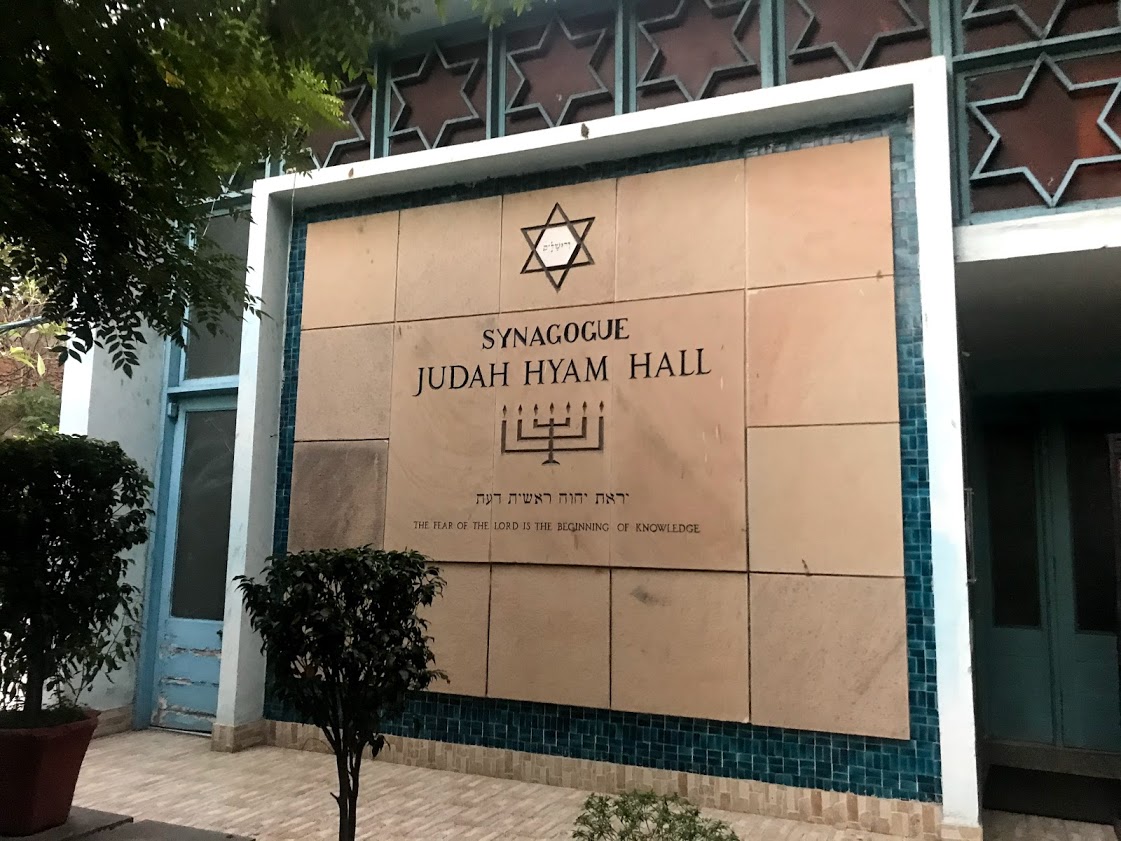
A nine-branched Hanukkah Menorah is also placed outside the Hall, on the way to the interfaith center. It was constructed in the memory of Ezra Kolet (1914-1992), president of the council of Indian Jewry. The inscription below it reads “May חֲנוּכָּה (Hanukkah) illuminate this planet with wisdom & peace”.
The walls leading to the entrance of the main hall feature names of the various members of the Jewish community who had donated towards the construction and maintenance of the Synagogue. A silver ornament next to the door depicts the holy temple of Jerusalem. Right upon entering, you encounter a table with two hand sanitizers and a collection of skull-caps (some in solid blacks while others in more vibrant whites and blues), as well as religious books. The hall is decorated with several paintings and ornaments depicting the various insignia of Judaism, mostly the Menorah ( sacred candelabrum) and the Star of David. Passages from the Torah are also framed across the hall. Red, Yellow and Green lights hang from the top, along with a double-sided oil lamp in the center, protected in a glass enclosure. The wooden chairs in the hall, too, feature a Star of David cut out on them. It is on these chairs that a congregation of 14 waits for Rabbi Ezekiel Malekar to arrive and begin the Shabbat service.
(You might also want to read: THE RUINS OF FEROZ SHAH KOTLA: WHERE THE DJINNS OF DELHI COME TO LIFE)

A Punekar who has been in Delhi for almost the past four decades, Rabbi Malekar, a little over 5’ in height, dressed in a green-and-blue checked shirt, a white mask, a bright red skull cap is an energetic man with a loud voice and walks rather swiftly for his advanced age. A recipient of multiple awards for his work in inter-faith harmony, Rabbi Malekar has also worked with the National Human Rights Commission, is a professor at the University of Allahabad, and is affiliated with multiple religious and spiritual organizations all over the country.
The Rabbi calls himself a ‘dharamguru’ who believes responsible for the development of a ‘rashtra charitra’, a national character. He narrates an incident from Vivekananda’s famous visit to the US, showing how he was an international thinker with a very nationalistic view of things. What sets him apart from many other Indian Rabbis is that he has a very liberal view towards religious affairs. The Rabbi is strongly against the ‘Ultra-Orthodox’ approach that many in his faith take and has consciously decided to throw open the gates of his synagogue for people of all faiths. Another word that upsets him is ‘conversion’ – as he proudly declares that he has conducted 10 interfaith marriages without any conversion of faith. Rabbi Ezekiel Malekar has also gotten rid of the age-old practice of only men being allowed as a part of the minyan (the minimum number of people necessary to conduct the prayers).
(You might also want to read: MALCHA MAHAL AND THE HOUSE OF OUDH: DELHI’S MOST HAUNTED?)

Before the prayer ceremony begins, the Rabbi begins with the blessing ceremony, placing his right hand over the head of those who were getting blessed by him, while holding their hands with his left hand. He asks the names of the parents of those being blessed and ends the blessing ceremony with Shalom. When young Hannah walked up to him for blessings, the Rabbi’s voice was filled with excitement as he pointed out Hannah was the name of his mother as well! He blessed all four children in attendance by saying ‘achi padhai karna’ (study well!).
A man who values his time in military precision, Rabbi Malekar makes it a point that his service starts exactly at 6:30 PM. With five minutes remaining, the co-conductor of the evening’s services brings up an iPad and a JioFi device, which helps the Rabbi connect with up to 50 to 60 families from all over the world, including some members of his own family from Israel and Australia. The Rabbi sang various psalms, gently swaying from left to right while thumping the book in other moments of passion. The Shabbat prayers concluded with a rather delightful singing of a ‘Shabbat Shalom’ hymn. The psalms lasted for well over half an hour, followed by the reading of a passage from the Torah (The passage depicted the story of Jacob, Rachel, and Leah), by which time the younger members of the audience had dozed off in their mothers’ laps while the enthusiastic front-benchers were gulping down every word, occasionally nodding in agreement. A Punekar strongly connected to his Marathi roots, Rabbi Ezekiel Malekar then recited the entire passage in Marathi for the benefit of his online listeners tuning in from Maharashtra.
(You might also want to read: GODS OF THE GREEN ROOM: BACKSTAGE AT ‘SHRI RAM’)
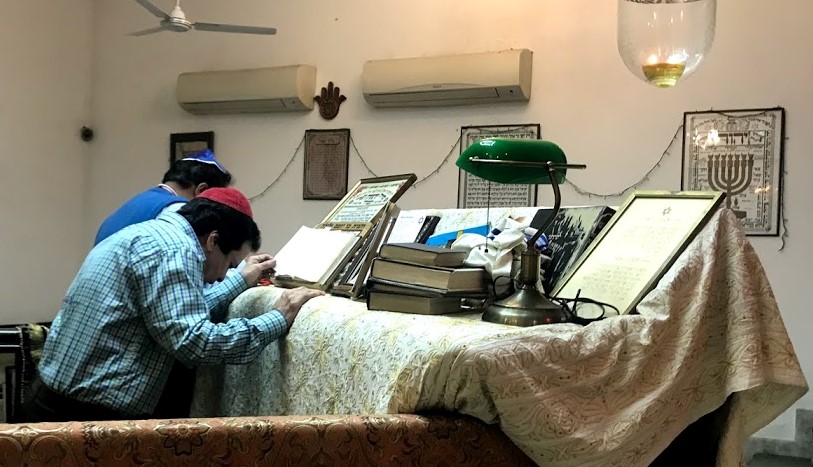
In 1948, the year Israel was formed, there were close to 35,000 Jews living in India. As of the 2011 census, the number has fallen close to 3500, with a majority of them living in Maharashtra and Kerala (Also Read: Anmol Dhawan’s piece on the two synagogues of Pune). Even Ahmedabad has a Jewish population of a little over 100 people. For Delhi, the number is significantly lesser. Upon conversing with the members of the congregation, it came to light that none of them were actually from the Jewish faith. The people present in the hall were either Christians, Hindus, or Sikhs, but the Rabbi never really asks anyone about what faith they belong to. A religious leader who hates differentiating between people on religious lines and one who has thrown open the doors to the house of worship for members of all faiths, Rabbi Ezekiel Malekar tells me that while he has Israel in his heart, it is India that flows in his blood.
(You might also want to read: BUN KI BAAT: WHAT’S NEXT FOR BOMBAY’S IRANI BAKERIES AND CAFES?)
More Images from the Judah Hyam Synagogue:
